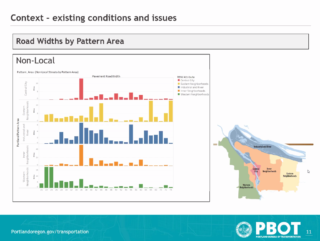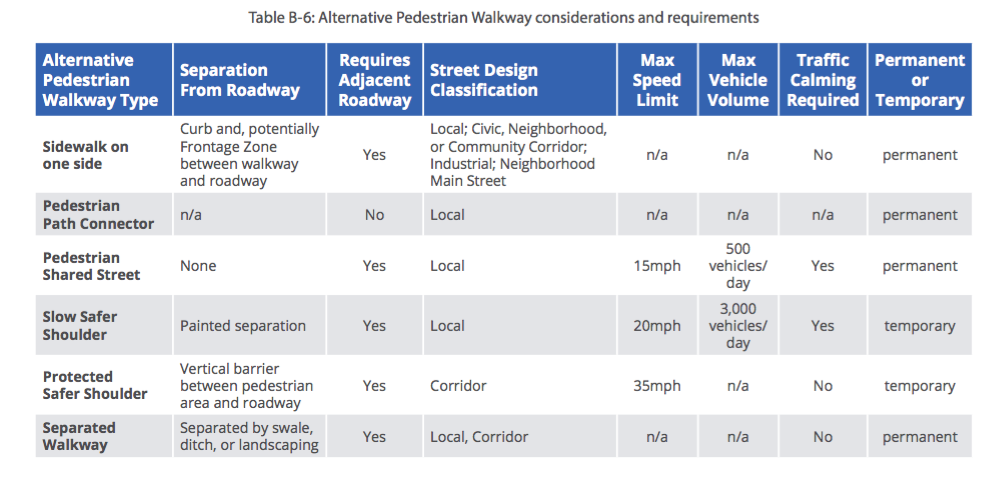A closer look at the nitty-gritty of some of the alternatives the Guide offers, shows that it still doesn’t address constrained situations common in Portland.
The draft of the City of Portland’s newly updated Pedestrian Design Guide (PDG) has been available to the public for a few weeks now and the Portland Bureau of Transportation (PBOT) is actively soliciting public comments which are due by October 31th. The new draft Guide updates the original 1998 document, and one of its tasks was to recognize the constraints of existing conditions and provide “flexibility and context-sensitive advice for how to approach more challenging and/or ROW-constricted situations” for the city staff who use it. The original 1998 Guide, which was ahead of its time, assumed ideal right-of-way conditions which just do not exist in large areas of Portland.
But a closer look at the nitty-gritty of some of the alternatives the Guide offers—and it is a huge improvement over the 1998 Guide—shows that it still doesn’t address constrained situations common in Portland.
Advertisement

The table of roadway widths by pattern area (right) released by the ongoing PBOT Streets 2035 project shows that non-local roads west of the Willamette are mostly 22 to 24 feet wide. East Portland, which has a variety of streets widths, including most of Portland’s excessively wide streets, also has many 22-24 ROW-constrained “non local” streets. (Streets 2035 didn’t define “non local,” but I assume it means anything PBOT did not reduce to 20 mph under their interpretation of city ordinance 188774, including collector streets.)
The problem is that, at 22 to 24 feet, many of these streets are too narrow to qualify for the alternative treatments the draft PDG offers, or their posted speeds are too high.
The PDG section on “Alternative Pedestrian Walkways” offers a table of treatments (below, Table B-6) followed by pages of descriptions of their appropriate use and minimum requirements. SW Broadway Dr, Patton Rd, Dosch Rd, Humphrey, Taylors Ferry, and so on through just about every collector in Southwest Portland, don’t meet the requirements of any of the treatments in Table B-6.
Portland attorney, safety advocate, and BikePortland contributor Scott Kocher (he’s also a financial supporter of BikePortland) agreed that “either the streets don’t qualify or a lot more width is needed,” and he added that the table “potentially gives folks another reason to say ‘no’” to frontage improvements.
With the PDG decision-making trees and alternatives, it is fair to ask what happens when the “Alternative Pedestrian Walkways” node returns negative—your street does not qualify for any alternative treatment. Then what? The existing condition is that these streets are posted 25 mph, people drive a lot faster than that, there are no bike facilities, and pedestrians walk in the road. Currently, the answer to “then what?” is to maintain that unsafe status quo. The PDG does not address this, but, to be fair, maybe it is not a PDG issue, maybe it is a Streets 2035 issue.
An obvious solution is to lower the posted speed of the street to 20 mph, and to install speed bumps to enforce it. Or even just prohibiting on-street parking and cleaning up what shoulders there are. Without any options for failing to meet the Table B-6 qualifications, Kocher says it “ignores the reality of what is happening in Southwest and East Portland everyday,” and offers a “clear path forward to doing nothing.”

— Lisa Caballero, lisacaballero853@gmail.com
— Get our headlines delivered to your inbox.
— Support this independent community media outlet with a one-time contribution or monthly subscription.



